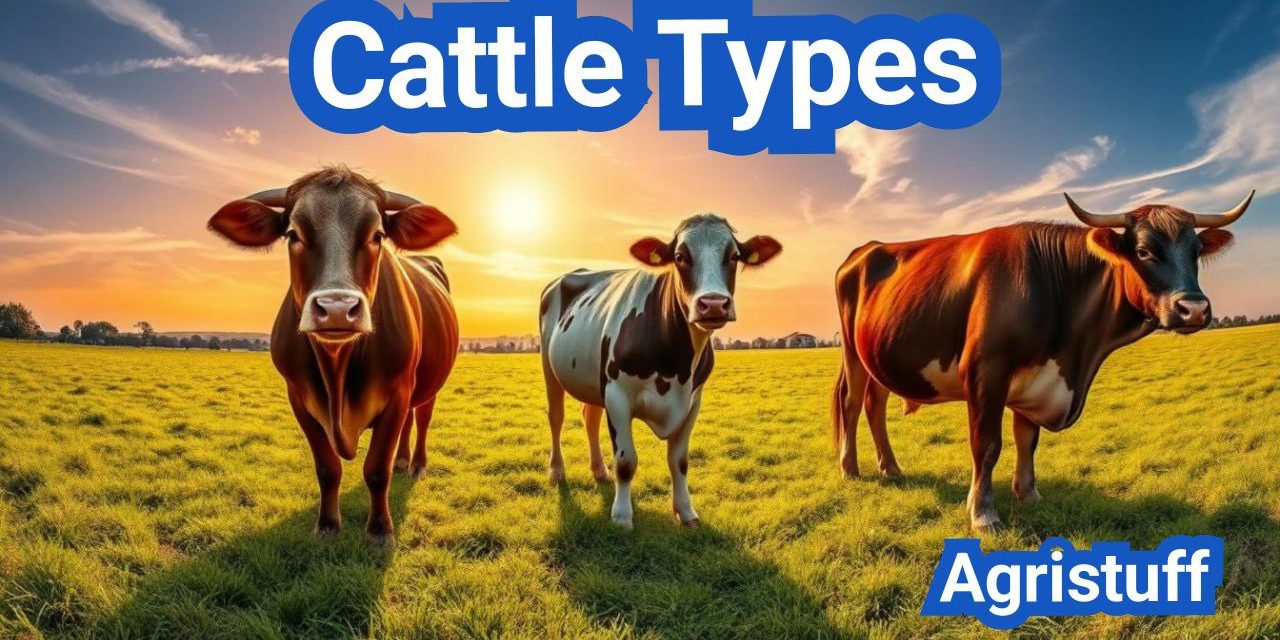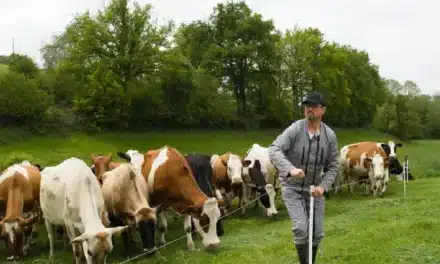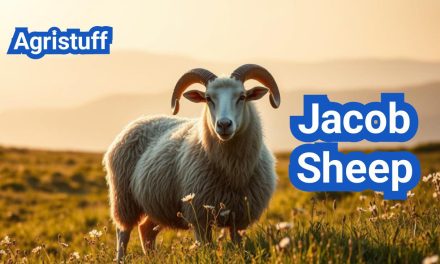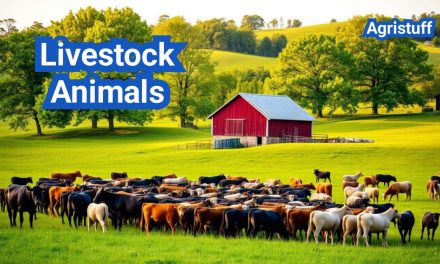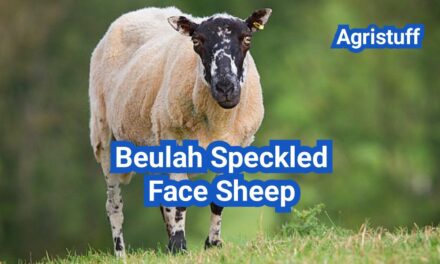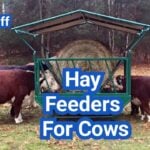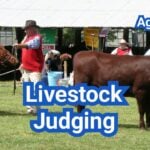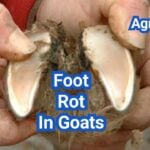Raising livestock can be a rewarding experience, providing your family with homegrown meat and dairy products. The key to a successful livestock farming operation lies in choosing the right breed for your specific needs.
Different cattle breeds have unique characteristics and uses. Beef cattle are raised for meat production, while dairy cattle are bred for their milk. There are also dual-purpose breeds that serve both purposes.
Key Takeaways
- Understanding the different cattle types is crucial for livestock farming.
- Beef cattle and dairy cattle serve distinct purposes.
- Dual-purpose breeds offer versatility in livestock production.
- Choosing the right breed depends on your specific farming needs.
- Livestock farming requires careful planning and breed selection.
Understanding the Basics of Cattle Classifications
Understanding cattle classifications is essential for farmers, consumers, and anyone involved in the cattle industry. Cattle breeds have evolved over time and are classified based on their purpose, such as beef, dairy, or dual-purpose. This classification system helps in identifying the characteristics and potential uses of different cattle breeds.
Tracing the Evolution of Modern Cattle Breeds
Modern cattle breeds have developed from ancient species through a process of selective breeding. This evolution has resulted in a diverse range of cattle breeds, each with unique characteristics suited to different agricultural purposes. The history of cattle domestication and breed development is complex, involving various species and geographical influences.
Differentiating Between Bos Taurus and Bos Indicus
Bos Taurus and Bos Indicus are two primary species of cattle that have distinct characteristics. Bos Taurus is generally associated with European breeds and is known for its milk and meat production. Bos Indicus, on the other hand, is more heat-tolerant and is commonly found in tropical regions. Understanding these differences is crucial for selecting the appropriate breed for specific farming conditions.
How Cattle Purpose Influences Breed Development
The purpose for which cattle are bred significantly influences their development. For instance, beef cattle are bred for their meat production qualities, while dairy cattle are selected for their milk-producing abilities. Dual-purpose breeds are developed to serve both purposes. The specific characteristics of each breed are shaped by the intended use, leading to a wide variety of cattle types.
Cattle Types: Identifying the Three Main Categories
Cattle breeds are generally categorized into three main types: beef, dairy, and dual-purpose. Understanding these categories is essential for farmers, ranchers, and anyone involved in the livestock industry.
Recognizing Beef Cattle Physical Characteristics
Beef cattle are known for their muscular build and are primarily raised for meat production. Breeds like Angus and Hereford are popular for their high-quality beef. Beef cattle are selected based on traits like growth rate, muscle mass, and marbling ability, which contribute to the tenderness and flavor of the meat.
Spotting Dairy Cattle Distinctive Features | Cattle Types
Dairy cattle, on the other hand, are bred for their high milk production. Holstein-Friesian cows are one of the most common dairy breeds, known for their ability to produce large quantities of milk. Dairy cattle are characterized by their large udders and are often taller and more angular than beef cattle.
“The ideal dairy cow should have a wedge-shaped body, a well-attached udder, and a calm temperament,” according to dairy farming experts.
Understanding Dual-Purpose Cattle Attributes
Dual-purpose cattle are versatile breeds that are used for both milk and meat production. Breeds like the Shorthorn and Red Poll are examples of dual-purpose cattle. These breeds offer farmers the flexibility to produce both milk and beef, depending on market demands.
| Cattle Type | Primary Use | Key Characteristics |
|---|---|---|
| Beef | Meat Production | Muscular build, fast growth rate |
| Dairy | Milk Production | High milk yield, large udders |
| Dual-Purpose | Both Milk and Meat | Versatile, adaptable to different farming systems |
Understanding the characteristics and uses of these three main cattle types can help farmers and ranchers make informed decisions about their livestock operations.
How to Select the Right Beef Cattle Breeds

Selecting the right beef cattle breed is crucial for the success of your operation. With numerous breeds available, each with its unique characteristics, making an informed decision is essential.
Evaluating Angus Cattle for Your Operation
Angus cattle are renowned for their high-quality beef and are one of the most popular beef cattle breeds. They are known for their marbling ability, which enhances the tenderness and flavor of the meat. When considering Angus cattle, it’s essential to evaluate their suitability for your specific operation, including factors such as climate adaptability and feed requirements.
Considering Hereford Cattle Benefits and Challenges
Hereford cattle are another prominent breed in the beef industry, recognized for their hardiness and ease of handling. They offer several benefits, including high-quality beef and a robust nature. However, potential challenges such as susceptibility to certain health issues should be considered when deciding to incorporate Hereford cattle into your operation.
Assessing Charolais Cattle for Meat Production | Cattle Types
Charolais cattle are known for their rapid growth rate and lean meat production, making them an attractive option for many beef producers. When assessing Charolais cattle, it’s crucial to consider their feed requirements and potential for meat production. Their ability to thrive in various environments is also an important factor to evaluate.
Exploring Simmental and Other Continental Breeds
Simmental cattle and other Continental breeds offer a range of characteristics that can be beneficial for beef production. Simmentals, for example, are known for their fast growth rate and muscular build. Exploring these breeds involves understanding their strengths, such as improved meat yield, and potential challenges, including specific nutritional needs.
When selecting the right beef cattle breed, it’s essential to consider factors such as climate, feed availability, and market demand. By evaluating the characteristics of breeds like Angus, Hereford, Charolais, and Simmental, you can make an informed decision that aligns with your operation’s goals and resources.
Mastering Beef Cattle Management Techniques
To achieve high-quality beef production, farmers must master various cattle management techniques. Effective beef cattle management involves a combination of nutrition, breeding, and health care strategies tailored to the specific needs of the operation.
Implementing Effective Feeding Programs
A well-designed feeding program is crucial for the growth and development of beef cattle. This includes providing high-quality forage and concentrates that meet the nutritional needs of the animals. Nutritional management plays a significant role in enhancing the quality and quantity of beef produced.
| Nutrient | Role in Cattle Nutrition | Sources |
|---|---|---|
| Protein | Essential for growth and muscle development | Legume hay, soybean meal |
| Energy | Provides the energy needed for growth and maintenance | Grains, corn silage |
| Minerals | Critical for various bodily functions | Mineral supplements, salt |
Developing Breeding Strategies for Quality Beef
Breeding strategies are vital for improving the genetic quality of beef cattle. This involves selecting breeds that are well-suited to the local climate and production goals. Breeding programs can be designed to enhance traits such as growth rate, fertility, and meat quality.
Managing Health Challenges in Beef Herds | Cattle Types
Health management is a critical aspect of beef cattle production. Implementing vaccination programs and maintaining a clean environment can help prevent diseases. Regular monitoring of cattle health and prompt intervention when issues arise are essential for maintaining a healthy herd.
How to Choose Productive Dairy Cattle Breeds

Selecting the right dairy cattle breed is crucial for achieving optimal milk production on your farm. Different breeds offer unique advantages, whether it’s high volume milk production, rich butterfat content, or a combination of both. Understanding these differences is key to making an informed decision that aligns with your dairy operation’s goals.
Evaluating Holstein-Friesian for High Volume Production
The Holstein-Friesian breed is renowned for its high milk production capabilities, making it a popular choice among dairy farmers. With an average annual milk yield significantly higher than many other breeds, Holsteins are ideal for operations focused on maximizing volume. However, their milk has a lower butterfat content compared to some other breeds.
Selecting Jersey Cattle for Butterfat Content | Cattle Types
Jersey cattle are prized for their rich milk, which has a higher butterfat content than many other breeds. This characteristic makes Jersey milk particularly suitable for producing cheese, butter, and other dairy products where fat content is a critical factor. Jerseys are also known for their hardiness and relatively low maintenance requirements.
Considering Guernsey and Brown Swiss Advantages
Guernsey and Brown Swiss breeds offer a balance between milk volume and quality. Guernsey cattle produce milk with a rich, creamy texture, while Brown Swiss are known for their longevity and durability, contributing to a more sustainable dairy operation. Both breeds are worth considering for farmers looking for a balance between quantity and quality.
Exploring Specialized Dairy Breeds for Specific Goals
Beyond the well-known breeds, there are several specialized dairy breeds that cater to specific production goals. Whether you’re looking to produce milk for direct consumption, cheese production, or other dairy products, there’s a breed that can meet your needs. Researching these breeds can help you identify the best fit for your operation’s unique requirements.
Setting Up a Successful Dairy Cattle Operation
Creating a productive dairy cattle operation involves a multifaceted approach that includes optimal facility design and management techniques. Dairy farmers must consider several critical elements to ensure the long-term success of their operation.
Designing Optimal Housing and Milking Facilities
The design of housing and milking facilities plays a crucial role in the overall efficiency and productivity of a dairy cattle operation. Well-designed facilities can improve cow comfort, reduce stress, and increase milk production. Key considerations include providing adequate ventilation, comfortable bedding, and efficient milking equipment.
Implementing Efficient Milking Routines | Cattle Types
Efficient milking routines are essential for maximizing milk production and maintaining cow health. This includes implementing a consistent milking schedule, ensuring proper milking techniques, and maintaining cleanliness and hygiene. Regular maintenance of milking equipment is also crucial to prevent issues and ensure optimal performance.
Managing Lactation Cycles for Maximum Production
Effective management of lactation cycles is vital for maximizing milk production and maintaining the overall health of the dairy herd. This involves monitoring cow reproductive cycles, managing breeding programs, and adjusting milking strategies to optimize production during different stages of lactation.
| Lactation Stage | Milking Strategy | Expected Milk Production |
|---|---|---|
| Early Lactation | Frequent Milking | High |
| Mid-Lactation | Standard Milking | Moderate |
| Late Lactation | Less Frequent Milking | Low |
According to dairy farming experts, “A well-managed lactation cycle is crucial for maintaining high milk production and ensuring the overall health of the dairy herd.”
“The key to successful dairy farming lies in the details of daily management, from milking routines to cow comfort.” – Dairy Farming Expert
Optimizing Nutrition for Different Dairy Cattle Breeds

The nutritional needs of dairy cattle vary significantly across different breeds, requiring tailored feeding strategies. High-producing dairy breeds, such as Holsteins, have distinct nutritional requirements compared to smaller breeds like Jerseys.
Formulating Rations for High-Producing Holsteins
High-producing Holsteins require rations that are rich in energy and protein to support their high milk production levels. Formulating rations for these cattle involves balancing the dietary components to meet their nutritional needs without causing metabolic disorders.
Adjusting Feed Programs for Smaller Dairy Breeds
Smaller dairy breeds, such as Jerseys and Guernseys, have different nutritional requirements. They need less energy and protein compared to Holsteins but still require high-quality feed to maintain their milk production and overall health.
Balancing Forage and Concentrate Requirements
Balancing forage and concentrate is crucial for all dairy breeds. Forage provides fiber, which is essential for rumen health, while concentrates offer the necessary energy and protein for milk production. The ratio of forage to concentrate varies depending on the breed, milk production level, and stage of lactation.
By understanding the specific nutritional needs of different dairy breeds and adjusting their feed programs accordingly, dairy farmers can optimize milk production and maintain the health and well-being of their cattle.
How to Integrate Dual-Purpose Cattle in Your Farm

The versatility of dual-purpose cattle makes them an ideal choice for farms seeking to diversify their output. These breeds offer the potential for both high-quality meat and milk production, making them a valuable asset for farmers looking to expand their operations.
Evaluating Shorthorn Cattle Versatility
Shorthorn cattle are known for their hardiness and adaptability, making them a popular choice for dual-purpose farming. They offer a balance between meat and milk production, with the added benefit of being relatively easy to manage. Shorthorn cattle are particularly suited to smaller farms where their versatility can be fully utilized.
Utilizing Red Poll Cattle for Small Operations
Red Poll cattle are another breed that excels in dual-purpose farming. They are known for their high milk production and the quality of their beef. Red Polls are particularly suited to smaller operations due to their docile nature and ease of handling.
Managing Devon and Pinzgauer for Meat and Milk
Devon and Pinzgauer breeds also offer significant benefits for dual-purpose farming. Devons are known for their hardiness and the quality of their beef, while Pinzgauers offer a robust milk production capability. Managing these breeds requires a balanced approach to maximize both meat and milk output.
Developing Marketing Strategies for Dual-Purpose Products
To fully capitalize on the benefits of dual-purpose cattle, farmers need to develop effective marketing strategies. This could involve highlighting the unique qualities of their products, such as the versatility of their cattle and the quality of both their meat and milk. Direct marketing to consumers can be particularly effective, allowing farmers to emphasize the premium nature of their products.
By carefully selecting and managing dual-purpose cattle breeds, farmers can create a more resilient and diverse agricultural operation. This not only enhances their productivity but also opens up new revenue streams through the sale of multiple products.
Preserving Heritage and Rare Cattle Breeds

The conservation of rare cattle breeds is gaining importance due to their distinct traits and historical significance. Heritage breeds such as Texas Longhorn and Highland cattle are not only valuable for their genetic uniqueness but also contribute to the cultural heritage of farming communities.
Working with Texas Longhorn Cattle
Texas Longhorn cattle are known for their hardiness and adaptability. They require less intensive management compared to other breeds, making them suitable for extensive grazing systems. Conservation efforts for Texas Longhorns involve maintaining their genetic purity and promoting their unique characteristics.
Raising Highland Cattle in Various Climates
Highland cattle are renowned for their ability to thrive in harsh climates. They are well-suited to rugged terrains and can withstand cold temperatures, making them ideal for farms in challenging environments. Efficient management practices for Highland cattle include providing adequate shelter and nutritional support.
Maintaining Galloway and Florida Cracker Genetics
Galloway and Florida Cracker cattle are other examples of heritage breeds that require careful genetic management. Galloway cattle are known for their hardiness and beef quality, while Florida Cracker cattle are prized for their resistance to disease and heat tolerance. Preserving the genetic integrity of these breeds is crucial for their long-term survival.
Finding Markets for Heritage Breed Products
One of the challenges in preserving heritage breeds is finding viable markets for their products. Strategies for marketing heritage breed products include:
- Highlighting the unique characteristics and historical significance of the breeds
- Promoting the quality and nutritional benefits of the meat or dairy products
- Engaging with local consumers and promoting direct sales channels
By adopting these strategies, farmers can ensure the economic viability of raising heritage and rare cattle breeds.
Implementing Sustainable Grazing Systems for All Cattle Types

Effective grazing management is key to optimizing cattle production while preserving pasture health. Sustainable grazing systems are designed to maintain the long-term viability of both the cattle and the pastures they graze on.
Designing Rotational Grazing Paddocks
Rotational grazing is a cornerstone of sustainable grazing systems. By dividing pastures into smaller paddocks and rotating cattle through them, farmers can prevent overgrazing and allow pastures to recover. This technique not only improves pasture health but also increases biodiversity and reduces the risk of parasite buildup.
Selecting Appropriate Forage Species
The choice of forage species is critical in sustainable grazing systems. Different cattle breeds have different nutritional requirements, and the right forage can significantly impact their productivity. For example, high-quality legumes like clover can boost the milk production of dairy cattle, while certain grass species may be more suitable for beef cattle.
Managing Seasonal Grazing Transitions
Seasonal changes can significantly impact pasture availability and quality. Effective grazing management involves planning for these transitions by adjusting stocking rates, providing supplemental feed when necessary, and ensuring that pastures are not overgrazed during periods of low growth.
Monitoring Pasture Health and Recovery
Regular monitoring of pasture health is essential for the success of sustainable grazing systems. This involves assessing factors such as forage availability, soil health, and the presence of weeds or invasive species. By doing so, farmers can make informed decisions about grazing management and make adjustments as needed to maintain pasture health.
| Grazing Management Practice | Benefits | Challenges |
|---|---|---|
| Rotational Grazing | Increased pasture productivity, improved biodiversity | Higher initial investment in fencing and infrastructure |
| Forage Species Selection | Improved cattle nutrition, increased productivity | Requires knowledge of different forage species and their nutritional profiles |
| Seasonal Grazing Transitions | Better adaptation to seasonal changes, reduced overgrazing | Requires planning and flexibility in stocking rates and feed supplementation |
How to Address Health Challenges Across Cattle Types

Maintaining cattle health is crucial for the success of any livestock operation. Effective health management strategies are essential for preventing disease, ensuring productivity, and promoting overall well-being.
Developing Preventative Health Protocols
Preventative health protocols are the cornerstone of cattle health management. These protocols involve regular vaccinations, parasite control measures, and nutritional management to prevent disease. Implementing a robust vaccination program is critical, as it helps protect against common cattle diseases. Regular monitoring of cattle health and prompt intervention when issues arise are also vital components of a preventative health strategy.
Managing Breed-Specific Health Concerns
Different cattle breeds have unique health concerns that need to be addressed. For example, some breeds are more prone to certain genetic disorders or are more susceptible to specific diseases. Understanding these breed-specific health concerns is essential for developing targeted health management strategies. Farmers should work closely with veterinarians to identify potential health issues and implement appropriate management practices.
Implementing Biosecurity Measures
Biosecurity measures are critical for preventing the introduction and spread of diseases within a cattle operation. This includes controlling access to the farm, implementing quarantine procedures for new animals, and maintaining proper hygiene practices. Effective biosecurity measures can significantly reduce the risk of disease outbreaks.
Working Effectively with Veterinarians
Collaboration with veterinarians is a key aspect of managing cattle health. Veterinarians can provide valuable guidance on developing preventative health protocols, managing breed-specific health concerns, and implementing biosecurity measures. Regular consultation with a veterinarian can help farmers stay up-to-date with the latest health management practices and address any health issues promptly.
By adopting a comprehensive approach to cattle health management, farmers can improve the health and productivity of their cattle, ultimately enhancing the overall success of their operation.
Calculating Economic Returns for Different Cattle Types

Economic returns in cattle farming are influenced by the initial investment, operational costs, and revenue streams associated with different cattle types. To make informed decisions, farmers must analyze these factors carefully.
Analyzing Initial Investment Requirements
The initial investment for cattle farming includes costs such as purchasing livestock, land preparation, and infrastructure development. Beef cattle, for instance, may require different initial investments compared to dairy cattle due to differences in housing and equipment needs.
Comparing Operational Costs Between Breeds
Operational costs vary significantly between different cattle breeds. For example, dairy breeds like Holstein-Friesian may have higher operational costs due to the need for milking equipment and facilities. In contrast, beef breeds might have lower operational costs but higher costs associated with feed and growth promotion.
Projecting Revenue Streams and Market Potential
Revenue streams in cattle farming come from the sale of meat, milk, or breeding stock. The market potential for these products can vary based on breed, quality, and demand. For instance, grass-fed beef has a different market potential compared to grain-fed beef.
Evaluating Risk Factors for Each Cattle Type
Each cattle type comes with its own set of risk factors, including market fluctuations, disease risks, and environmental factors. For example, dairy cattle are more susceptible to certain health issues that can impact milk production. Understanding these risks is crucial for projecting economic returns.
By carefully analyzing initial investments, operational costs, revenue streams, and risk factors, farmers can make informed decisions about which cattle type to raise for optimal economic returns.
Building Appropriate Infrastructure for Your Cattle Type

Infrastructure plays a vital role in determining the productivity and profitability of cattle farms. Effective cattle management requires well-designed facilities that cater to the specific needs of different cattle types.
Designing Handling Facilities for Beef Operations
Beef cattle operations require handling facilities that ensure safe and efficient animal handling. This includes crushes, races, and loading ramps designed to minimize stress on the animals.
Creating Efficient Dairy Barn Layouts
Dairy barn layouts should prioritize cow comfort and milking efficiency. Features such as proper ventilation, adequate bedding, and well-designed milking parlors are crucial.
Adapting Facilities for Dual-Purpose Management
For dual-purpose cattle, facilities need to be adaptable for both milk production and beef management. This requires flexible design elements that can accommodate different management practices.
Scaling Infrastructure to Operation Size
The scale of infrastructure should match the size of the operation. Larger operations require more extensive facilities, while smaller farms can benefit from more compact designs.
| Cattle Type | Infrastructure Needs | Key Features |
|---|---|---|
| Beef | Handling facilities | Crushes, races, loading ramps |
| Dairy | Dairy barn layouts | Proper ventilation, milking parlors |
| Dual-Purpose | Adaptable facilities | Flexible design elements |
By understanding the specific infrastructure needs for different cattle types, farmers can make informed decisions to enhance their operations.
How to Market Products from Different Cattle Types
Marketing cattle products effectively requires a multi-faceted approach that considers the unique characteristics of different cattle types. As the cattle industry continues to evolve, farmers and producers must adapt their marketing strategies to meet changing consumer demands.
Developing Direct Marketing Channels for Beef
Direct marketing allows beef producers to connect directly with consumers, potentially increasing profit margins. Strategies include farmers’ markets, online sales platforms, and community-supported agriculture (CSA) programs. Building a loyal customer base is crucial for long-term success in direct marketing.
Exploring Value-Added Dairy Product Options
Dairy farmers can enhance their products by creating value-added items such as artisanal cheeses, flavored yogurts, or gourmet butter. Product diversification can help dairy farmers tap into niche markets and increase revenue.
Creating Premium Markets for Heritage Breeds
Heritage cattle breeds offer unique marketing opportunities due to their distinct characteristics and historical significance. Producers can capitalize on the premium pricing associated with these breeds by highlighting their heritage and quality.
Building Your Farm Brand Around Cattle Type
A strong farm brand can differentiate your products in a crowded market. By emphasizing the unique qualities of your cattle breed and production methods, you can create a compelling brand identity.
Effective cattle marketing involves understanding your target audience and developing strategies that resonate with them. Whether through direct marketing, value-added products, or premium pricing for heritage breeds, a well-crafted marketing plan can significantly enhance your farm’s profitability.
Making the Right Cattle Type Decision for Long-Term Success
Making the right cattle type decision is crucial for achieving long-term success in cattle farming. This decision involves considering various factors, including breed characteristics, management requirements, and market demand. By understanding the different cattle types, such as beef, dairy, and dual-purpose breeds, farmers can optimize their operations to meet specific goals.
The choice of cattle type significantly impacts the overall efficiency and profitability of a cattle farming operation. For instance, selecting breeds well-suited to the farm’s climate and resources can enhance productivity and reduce costs. Additionally, understanding the market demand for different cattle products can help farmers tailor their operations to meet consumer needs, thereby increasing their competitiveness.
Ultimately, informed decision-making about cattle types is essential for long-term success in cattle farming. By considering the unique attributes and requirements of different breeds, farmers can create a thriving and sustainable operation that meets their goals and contributes to the overall success of their business.
FAQ
What are the main categories of cattle types?
The three main categories of cattle types are beef, dairy, and dual-purpose breeds, each with distinct characteristics and uses.
What is the difference between Bos Taurus and Bos Indicus cattle?
Bos Taurus and Bos Indicus are two different species of cattle, with Bos Taurus being more adapted to temperate climates and Bos Indicus being more heat-tolerant and commonly found in tropical regions.
How do I choose the right breed of cattle for my operation?
Choosing the right breed depends on your specific needs, such as the purpose of the cattle (beef, dairy, or dual-purpose), climate, and available resources.
What are some popular beef cattle breeds?
Popular beef cattle breeds include Angus, Hereford, and Charolais, known for their high-quality meat and growth rates.
What are the benefits of rotational grazing for cattle?
Rotational grazing helps maintain pasture health, reduces erosion, and increases forage production, ultimately benefiting cattle health and productivity.
How do I manage health challenges in my cattle herd?
Managing health challenges involves developing preventative health protocols, implementing biosecurity measures, and monitoring breed-specific health concerns.
What are the economic considerations for raising different cattle types?
Economic considerations include initial investment requirements, operational costs, and revenue projections, which vary depending on the cattle type and production goals.
How do I market products from different cattle types?
Marketing strategies include developing direct marketing channels, creating value-added products, and targeting premium markets for heritage breeds.
What are the advantages of dual-purpose cattle breeds?
Dual-purpose cattle breeds offer versatility, providing both meat and milk, and can be a valuable option for small-scale or diversified farming operations.
How do I optimize nutrition for dairy cattle breeds?
Optimizing nutrition involves formulating rations tailored to the breed’s needs, balancing forage and concentrate requirements, and adjusting feed programs as necessary.
What are some rare and heritage cattle breeds worth preserving?
Examples of rare and heritage cattle breeds include Texas Longhorn, Highland, and Galloway, which possess unique characteristics and genetic diversity.
How do I design handling facilities for beef cattle operations?
Designing handling facilities involves creating efficient layouts that minimize stress and improve cattle flow, incorporating features like chutes and crowding pens.
What are the key factors in setting up a successful dairy cattle operation?
Key factors include designing optimal housing and milking facilities, implementing efficient milking routines, and managing lactation cycles for maximum production.
Conclusion of: Cattle Types
Cattle types vary widely, reflecting their specific purposes in agriculture, from beef and dairy production to dual-purpose roles. Understanding different cattle types is essential for farmers to select breeds best suited to their operational goals and local environmental conditions. This detailed guide explores various cattle types, including beef, dairy, and dual-purpose cattle, highlighting their unique characteristics and suitability.
What are Cattle Types?
Cattle types refer to classifications of cattle based on their primary uses in agriculture, specifically beef, dairy, or dual-purpose production. Each cattle type exhibits distinct characteristics that optimize its performance for the intended agricultural purpose, influencing breed selection, management practices, and farming profitability. Cattle Types Overview
Beef Cattle Types
Beef cattle types are primarily raised for meat production, characterized by specific traits such as rapid growth rates, muscle development, and meat quality:
- Angus: Renowned for superior marbling, tenderness, and adaptability to various climates.
- Hereford: Known for resilience and quality beef production.
- Charolais: Valued for fast growth and high meat yield.
- Simmental: Dual-use breed excellent for beef production due to its size and feed efficiency. Beef Breeds Information
Dairy Cattle Types
Dairy cattle types are specialized for high milk production, characterized by breed-specific milk yield and quality:
- Holstein: Highest milk-producing breed globally, essential in commercial dairy operations.
- Jersey: Known for milk with high butterfat content, ideal for cheese production.
- Guernsey: Produces nutritious milk rich in beta-carotene.
- Brown Swiss: Robust breed providing consistent milk production. Dairy Breeds Overview
Dual-Purpose Cattle Types
Dual-purpose cattle types provide both meat and milk, offering versatility and economic flexibility to farmers:
- Milking Shorthorn: Provides balanced milk production and beef quality.
- Dexter: Ideal for small-scale farming, providing quality milk and beef.
- Devon: Known for good milk yield and high-quality beef.
- Red Poll: Versatile breed offering efficient milk production and desirable meat qualities. Dual-Purpose Breeds
Selection Criteria for Cattle Types
Choosing suitable cattle types requires considering several crucial factors:
- Purpose Alignment: Matching cattle types with farming goals (beef, dairy, dual-purpose).
- Environmental Adaptability: Breeds suitable for local climate and environmental conditions.
- Management Capability: Assessing necessary infrastructure and management practices.
- Economic Considerations: Analyzing breed-specific costs and potential profitability. Selecting Cattle Breeds
Feeding Strategies for Different Cattle Types
Feeding practices vary among cattle types, impacting their health and productivity:
- Beef Cattle Nutrition: Focus on growth, muscle development, and finishing for meat quality.
- Dairy Cattle Nutrition: Emphasis on maintaining high milk yield and nutritional balance.
- Dual-Purpose Nutrition: Balancing nutrition to support both milk and meat production effectively. Cattle Nutrition Guide
Health and Welfare for Cattle Types
Effective health management is vital across all cattle types:
- Routine Health Checks: Preventative care to ensure optimal health and productivity.
- Vaccination Programs: Protecting cattle from common diseases affecting productivity.
- Stress Management: Proper handling practices to minimize stress and maintain welfare. Cattle Health and Welfare
Housing and Infrastructure Needs
Proper infrastructure is essential for different cattle types, influencing welfare and productivity:
- Beef Cattle Housing: Structures designed for comfortable living and efficient meat production.
- Dairy Cattle Facilities: Specialized milking and housing setups to optimize milk production.
- Dual-Purpose Housing: Flexible setups catering to both milk and beef production needs. Housing Systems
Economic Impact of Cattle Types
Economic aspects significantly influence the selection and management of cattle types:
- Cost Efficiency: Optimizing feeding, healthcare, and operational costs.
- Market Demand: Understanding consumer preferences affecting cattle type selection.
- Profit Analysis: Regular evaluation of production efficiency and profitability. Economic Analysis
Environmental Sustainability of Cattle Types
Sustainable farming practices across cattle types enhance environmental stewardship:
- Rotational Grazing: Promotes pasture health and environmental conservation.
- Efficient Resource Use: Reduces water and feed wastage.
- Emissions Control: Adopting strategies to minimize methane and waste emissions. Sustainable Livestock Farming
Final Thought
Understanding different cattle types—beef, dairy, and dual-purpose—is critical for effective livestock management, economic sustainability, and environmental responsibility. Choosing appropriate cattle types aligned with specific farm goals ensures efficient production and maximizes profitability.

